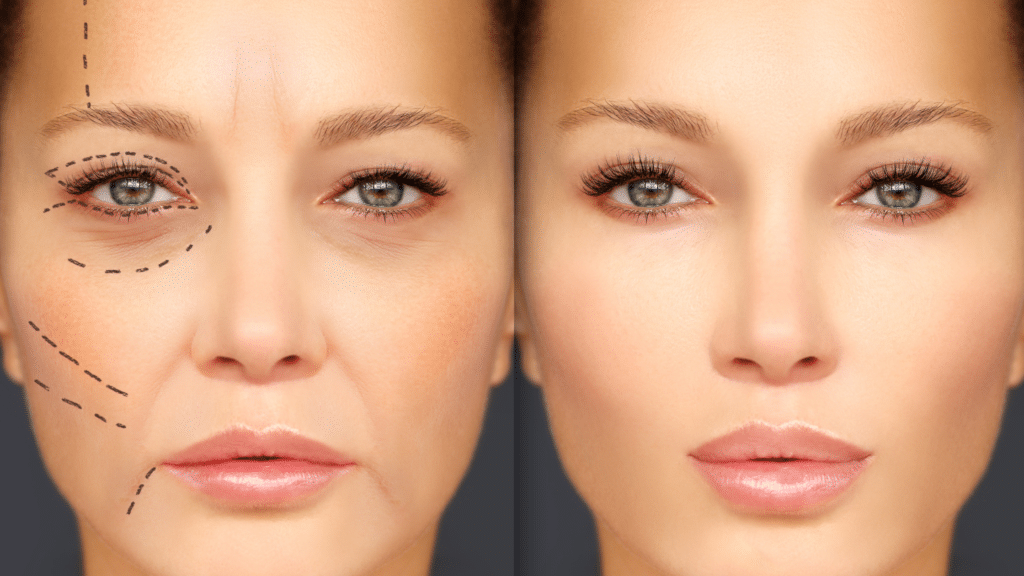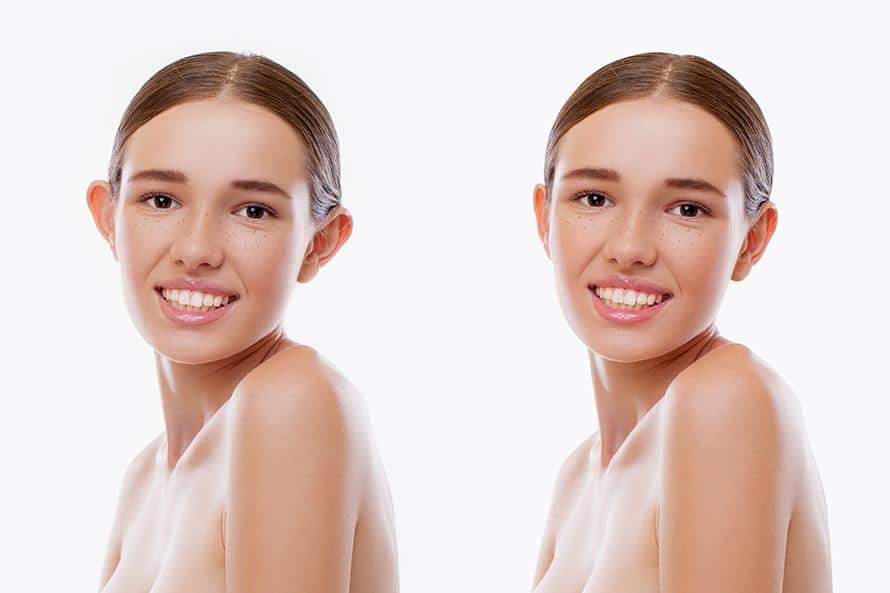Vaser liposuction, a revolutionary advancement in the field of cosmetic surgery, has transformed body contouring. Rooted in the late 20th century, this technique leverages ultrasonic technology to selectively break down fat cells while preserving surrounding tissues. It’s not just about fat removal; it’s about sculpting the body with precision and minimal downtime. Whether you’re aiming for a subtle enhancement or a dramatic transformation, understanding how vaser liposuction stands out from traditional methods can guide you towards making an informed decision that aligns with your aesthetic goals.
VASER Liposuction Explained
Procedure Basics
VASER liposuction stands out as a minimally invasive cosmetic procedure. It employs ultrasound technology to target and break down fat cells without harming surrounding tissues. This approach allows for the removal of unwanted fat with less risk and discomfort.
The process begins with the injection of a tumescent liquid into the area being treated. Then, small probes emit ultrasound waves to loosen fat cells. These are then removed via a gentle suction process.
Key Benefits
Less tissue damage is a significant advantage of VASER lipo over traditional methods. The precision of ultrasound technology ensures that only fat deposits are targeted, sparing nerves, blood vessels, and connective tissues from trauma.
Another benefit is its effectiveness in treating areas difficult to address with standard liposuction techniques. VASER lipo can sculpt and define muscles more distinctly, offering patients enhanced body contouring results.
Candidate Suitability
Not everyone is an ideal candidate for VASER liposuction. Suitable candidates typically have good skin elasticity and are close to their ideal body weight but struggle with localized fat deposits that do not respond to diet or exercise.
Individuals suffering from lymphedema or other medical conditions might find relief through this procedure as well, thanks to its ability to reduce excess fatty tissue while minimizing damage to lymphatic systems.
VASER vs Traditional Techniques
Efficiency Comparison
VASER liposuction stands out for its precision in targeting stubborn fat areas. Unlike traditional techniques, it uses ultrasound technology to break down fat cells before removal. This approach allows for a more efficient and less invasive process.
Traditional methods often struggle with dense or fibrous areas. VASER, however, excels in these situations, offering patients better results. It’s particularly effective on the abdomen, thighs, and back.
Recovery Times
Recovery from VASER liposuction is generally quicker than with older techniques. Patients can expect to return to normal activities within days rather than weeks.
This faster recovery is due to the less traumatic nature of the procedure. There’s minimal damage to surrounding tissues, reducing swelling and discomfort post-operation.
Risk Reduction
The risk of complications with VASER is significantly lower compared to traditional liposuction methods. Its precise targeting means there’s less chance of damaging nearby structures like nerves or blood vessels.
Patients report fewer instances of bruising and infections after undergoing VASER procedures. This safety profile makes it a preferred choice for both doctors and patients seeking body contouring solutions.
Procedure and Precision
Consultation Phase
The journey towards a refined physical appearance begins with a consultation. Here, cosmetic surgeons evaluate the condition of the areas to be treated. They discuss expectations and outline the procedure.
Patients learn about the benefits of VASER liposuction. It’s crucial for setting realistic goals.
Evaluation Process
Next comes a thorough evaluation. Surgeons assess specific areas needing improvement. This step ensures that VASER is the right approach for each individual’s aesthetics goals.
This process helps in planning for precise fat removal.
Surgery Day
On surgery day, patients experience the cutting-edge technology of ultrasound waves firsthand. These waves target fat cells in designated areas without harming surrounding tissues.
This precision allows for detailed sculpting of body contours, offering results traditional techniques can’t match.
Post-Procedure Care
After surgery, patients receive detailed post-procedure care instructions. Following these guidelines is essential for optimal healing and achieving desired outcomes.
Proper care ensures lasting improvements in physical appearance.
Health and Wellness Benefits
Cardiovascular Improvement
Removing excess fat through Vaser liposuction can lead to significant health additions. It not only enhances one’s physical appearance but also contributes to improved cardiovascular health. The reduction in body fat decreases the strain on the heart, lowering the risk of obesity-related diseases.
People often find themselves more motivated towards maintaining a healthy lifestyle post-procedure. This includes adopting a balanced diet and engaging in regular physical activity, further boosting cardiovascular wellness.
Energy Surge
Post-Vaser liposuction, individuals frequently experience an increase in energy levels. This surge is attributed to the body carrying less weight, making it easier to move around and perform daily activities.
Increased energy promotes greater participation in physical activities. This not only aids in maintaining weight loss but also contributes to overall well-being by reducing risks associated with sedentary lifestyles.
Psychological Boost
The psychological benefits following Vaser liposuction are profound. Enhanced self-esteem and improved body image are common outcomes that patients report. Feeling good about one’s appearance can lead to significant mental well-being improvements.
The boost in confidence encourages individuals to adopt a healthier lifestyle, engage more socially, and pursue activities they previously avoided due to self-consciousness about their bodies.
Enhanced Mobility and Comfort
Fat Reduction
Reducing extra fat in areas like the thighs and abdomen can significantly improve mobility. This is because excess fat often hinders easy movement. After vaser liposuction, individuals experience less resistance when moving about, making activities such as walking or climbing stairs easier.
The removal of stubborn fat not only enhances physical appearance but also decreases discomfort during exercise. With fewer fat pockets, there’s less weight to carry around, leading to a more comfortable workout experience.

Skin Comfort
Excess fat can cause chafing or skin irritation, especially in the thighs and underarms. By targeting these areas with vaser liposuction, one can alleviate such distress. The procedure removes stubborn fat, reducing friction between skin folds.
This reduction in friction leads to an improvement in overall skin comfort. People find that regular exercise becomes more doable without the added pain from irritated skin.
Recovery Time and Downtime
Recovery Timeline
After undergoing VASER liposuction, patients often experience a faster recovery period compared to traditional liposuction techniques. Typically, individuals can return to their daily activities within a few days. However, it’s crucial to allow the body time to heal properly.
Patients should expect to see significant improvements in swelling and bruising after the first week. Full recovery, where most of the swelling has subsided and the final contours are visible, usually occurs within six months.
Side Effects
Common side effects post-VASER liposuction include swelling, bruising, and discomfort around the treated areas. These symptoms are generally mild and improve significantly within the first few weeks.
It’s important for patients to monitor their recovery process closely. Any unusual or prolonged symptoms should be reported to their healthcare provider immediately.
Minimizing Downtime
To ensure a smooth and swift recovery, following post-procedure care instructions is key. Patients are advised to wear compression garments as directed by their surgeon. These help reduce swelling and support the healing tissues.
Staying hydrated and maintaining a healthy diet also play critical roles in minimizing downtime. Moreover, light walking is encouraged to boost circulation but avoid strenuous activities until cleared by your doctor.
Real-Life Success Stories
Patient Transformations
People often struggle with stubborn fat that won’t budge, despite diet and exercise. VASER liposuction has become a sought-after solution for many. Through anonymized patient stories, the impact of this procedure becomes clear.
One individual, a 35-year-old woman, battled with her midsection fat for years. It made her self-conscious and hindered her from enjoying life to the fullest. After VASER liposuction, she described feeling like she had been given a new lease on life. Her clothes fit better, and her confidence soared.
Another story comes from a 42-year-old man who felt his body didn’t reflect his active lifestyle due to persistent love handles. Post-procedure, he marveled at how his body finally matched his health-conscious efforts.
Visual Evidence
Before-and-after photos serve as powerful testimonials to VASER liposuction’s effectiveness. With consent from patients, these images showcase dramatic transformations.
Photos reveal not just significant fat reduction but also enhanced body contours. Patients express joy over their refined appearances and how these changes have positively impacted their lives.
These visual aids complement recovery narratives shared in the previous section on “Recovery Time and Downtime.” They highlight not only the physical benefits but also the emotional uplift experienced by individuals post-procedure.
Maintaining Results Post-Procedure
Healthy Lifestyle
Adopting a healthy lifestyle is crucial for maintaining VASER liposuction results. A balanced diet and regular exercise play key roles.
Eating right ensures the body stays lean. It prevents fat from returning to treated areas. Regular physical activity keeps the body toned and fit. Together, they help maintain the sculpted look achieved through VASER liposuction.
Follow-up Care
Regular follow-up appointments with healthcare providers are essential. They monitor progress and address any concerns promptly.
These appointments allow for adjustments in care plans if needed. They also provide an opportunity to discuss any questions about maintaining results long-term.
Avoid Old Habits
Returning to old habits can compromise the longevity of VASER liposuction outcomes. It’s important to stay vigilant against slipping back into patterns that led to the need for liposuction initially.
Unhealthy eating and lack of exercise are common pitfalls. Recognizing these risks early helps preserve the procedure’s benefits.
Summary
VASER liposuction stands out as a game-changer, offering precision, reduced recovery times, and significant health benefits. You’ve seen how it compares favorably to traditional methods, emphasizing less invasive techniques and faster healing. Success stories highlight its transformative impact, not just physically but also in enhancing lifestyle and mobility. Maintaining results requires a commitment to wellness, reinforcing the procedure’s role in promoting a healthier, more active life.
Ready to take the next step? Consider VASER liposuction as your ally in achieving your body goals. Remember, the journey doesn’t end post-procedure; it’s a continuous commitment to your health and well-being. Reach out to a qualified professional today and start your path toward a more confident, comfortable you. Your ideal self isn’t just a dream—it’s within reach.
Frequently Asked Questions
What is VASER liposuction?
VASER liposuction is a minimally invasive fat removal procedure that uses ultrasound technology to target and liquefy fat cells, making them easier to remove. This technique allows for precision body contouring with less downtime compared to traditional methods.
How does VASER differ from traditional liposuction techniques?
Unlike traditional liposuction, which simply vacuums out fat, VASER utilizes ultrasound waves to break down fat cells first. This results in less trauma to the body, more precise sculpting capabilities, and generally quicker recovery times.
What are the health benefits of opting for VASER liposuction?
VASER liposuction can improve your physical health by removing stubborn fat deposits that are resistant to diet and exercise. This can lead to enhanced mobility, reduced joint stress, and an overall improvement in wellness and comfort.
Can VASER liposuction enhance mobility and comfort?
Yes, by precisely targeting and removing excess fat around joints or areas contributing to discomfort, VASER lipo can significantly enhance mobility and comfort levels.
What is the typical recovery time after a VASER liposuction procedure?
Recovery times vary but most patients can resume light activities within a few days post-procedure. Full recovery and final results may take up to 6 weeks as swelling decreases.
Are there any real-life success stories from people who’ve had VASER lipo?
Absolutely! Many individuals have shared their positive experiences with VASER lipo online through testimonials. They often highlight improved body contours, faster recovery times, and increased confidence post-procedure.
How can I maintain my results after having VASER lipo?
Maintaining results involves adopting a healthy lifestyle with regular exercise and a balanced diet. It’s important to stay hydrated, follow your surgeon’s post-op care instructions closely, and attend all follow-up appointments for optimal outcomes.











